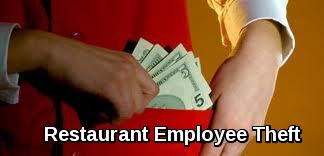“…Knowing they were being monitored, the servers not only pulled back on any unethical practices, but also channeled their efforts into, say, prompting customers to have that dessert or a second beer, raising revenue for the restaurant and tips for themselves… in the restaurant  industry, analysts estimate the losses from employee theft at 1 percent of revenue. That does not seem like a lot, but restaurant profit margins are slender, typically 2 to 5 percent. So cutting down on theft can be an important contributor to a restaurant’s financial health…”
industry, analysts estimate the losses from employee theft at 1 percent of revenue. That does not seem like a lot, but restaurant profit margins are slender, typically 2 to 5 percent. So cutting down on theft can be an important contributor to a restaurant’s financial health…”
And a new research paper, published on Saturday, shows in detail how significant the surveillance effect can be. The paper, “Cleaning House: The Impact of Information Technology Monitoring on Employee Theft and Productivity,†is the work of three academics: Lamar Pierce, an associate professor at the Olin Business School at Washington University in St. Louis; Daniel Snow, an associate professor at the Marriott School at Brigham Young University; and Andrew McAfee, a research scientist at the Sloan School of Management at the Massachusetts Institute of Technology.
The researchers measured the impact of software that monitors employee-level theft and sales transactions, before and after the technology was installed, at 392 restaurants in 39 states. The restaurants were in five “casual dining†chains. The paper does not name the five, but it cites examples of the casual dining category including Applebee’s, Chili’s and Olive Garden.
Employee theft and fraud is a big problem, estimated at up to $200 billion a year across the economy.

